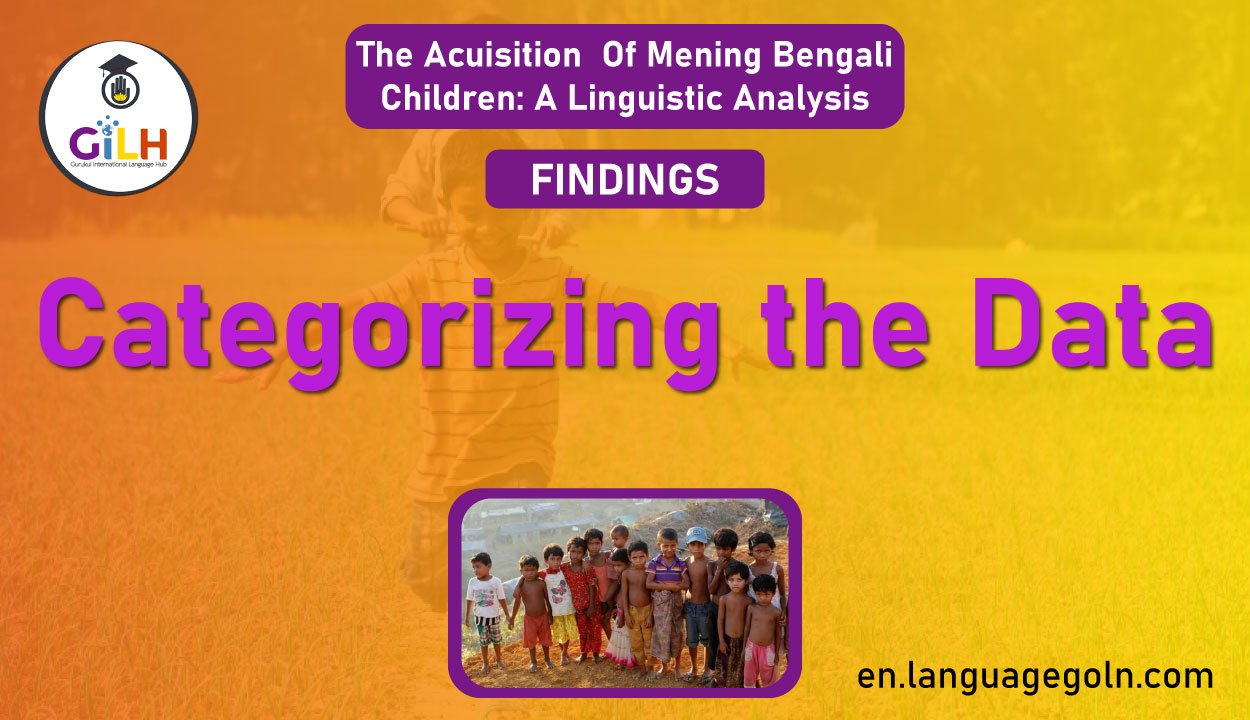Today our topic of discussion is – Categorizing the data
Categorizing the data
The explicit data that are collected throughout are analyzed and coded into the
following categories-

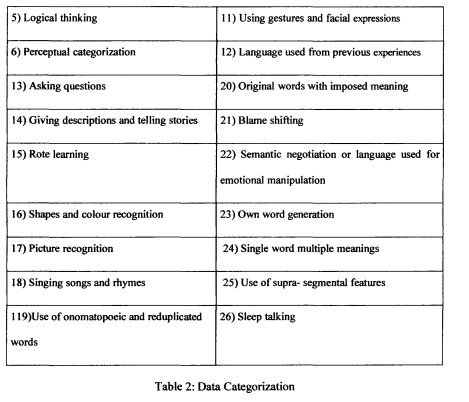
These categories are then divided into the above mentioned four themes, (1) early language use, (2) cognitive developments, (3) applying linguistic features and (4) using language for personal benefit.
As ‘cognitive development’ is a vast area of child development, it is divided and discussed under three sub-categories-
(a) Reasoning and finding solutions,
(b) Processing sensory information and
(c) Attention and Memory. Two tables are presented below (Table: 2 followed by Table: 3to show how the categories are divided into the above mentioned
themes-
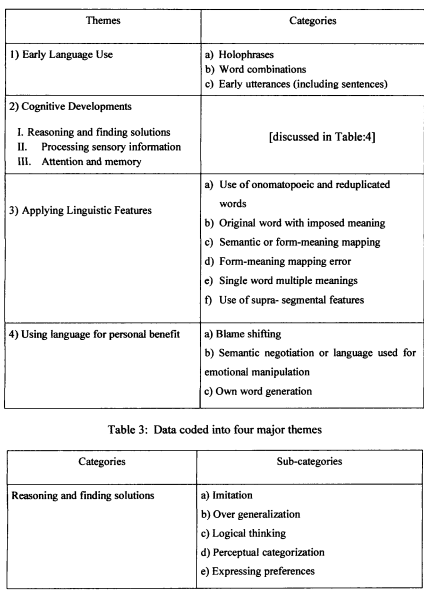
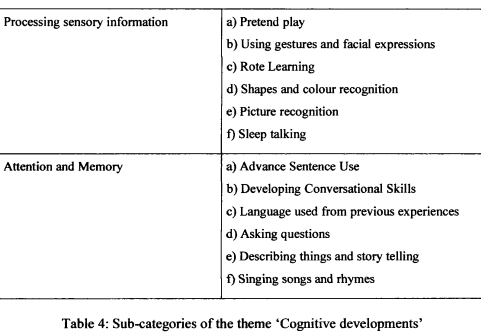
This chapter sets out the findings of the observations, initially analyzing the descriptive data samples and their basic features. This will be accompanied by an overview of the results and aspects of the questionnaire under headings (1) early language use, (2) cognitive developments, (3) applying linguistic features and (4) using language for personal benefit.
This will be accompanied by a detailed review of the findings and their connections with existing literature and analysis in order to decide if the new data supports or contradicts existing information. The result hereby is informed by the research questions that guided my study.
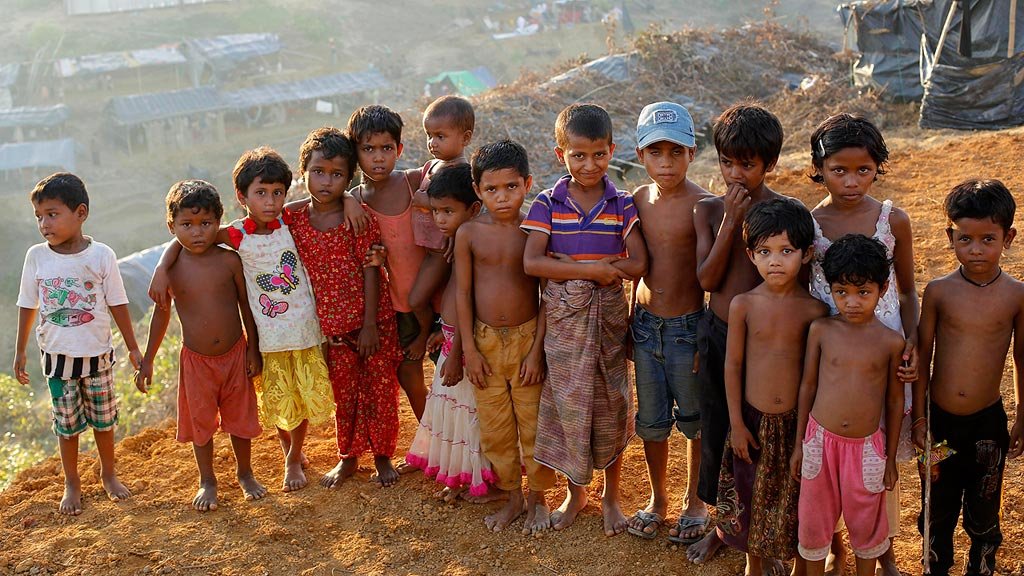
To answer the questions this research aims to provide a conceptual overview of the meaning acquisition process of Bengali children. Explicating the nature of this process and identifying children’s meaning acquisition level will facilitate the explanation of the main research questions. Stages of language acquisition by Bengali children will also be analyzed, as it will clarify when and how children begin semantic mapping of their language.
See more
